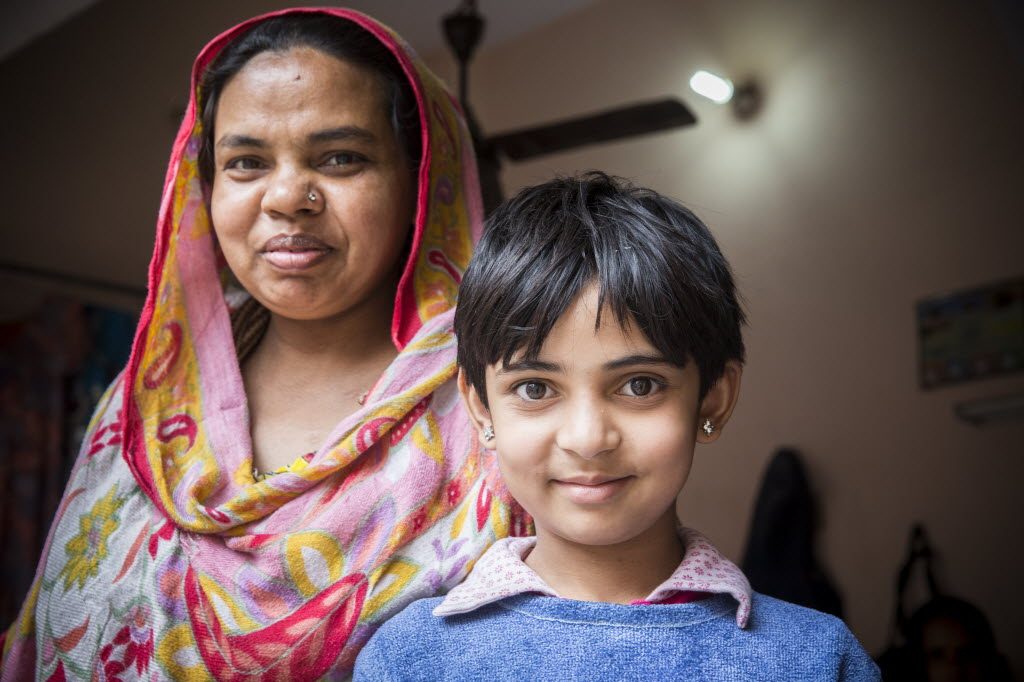At Habitat for Humanity, we work together with families and communities to build economic independence.

Lipi Ansari believed in herself even when her bleak surroundings looked hopeless. The 35-year-old mother of two in Bawana, north of Delhi, India, was ready to stop moving from one destitute place to another and to use her exceptional talent for sewing to provide the economic stability she needed.
She was granted a housing loan through Habitat for Humanity, and with the help of volunteers, she built a home in 2013. Now, Ansari’s children thrive, and her customers flow in and out of her tailoring business. She owns four sewing machines and pays assistants to help with the business. She also takes on apprentices from the community, teaching them the precision of each stitch and giving others a chance to earn a decent income for their families.
Lipi is also investing in a good education for her daughter, Faima, 9, who counts literature and English among her favourite subjects.
Ansari is among the thousands of homeowners around the world each year who can tell the story of how partnering with Habitat for Humanity helped them and their families move toward economic stability.
In Uganda, for example, 59 students living in houses built as part of Habitat for Humanity Uganda’s work with orphans and vulnerable groups are well on their way to financial self-sufficiency after receiving vocational training in tailoring, carpentry and construction. After completing the nine months of training, a student can earn more in a day as a mason on a construction site than he would make in two months cultivating crops.
One student, Alutia John Kokos, the oldest of several siblings, had been forced to drop out of school because he couldn’t afford the tuition. Since completing Habitat’s vocational training programme, Kokos has used his earnings to buy one of his sisters a mattress of her own, and he is saving money so that all of his siblings can go to school and work toward financial independence.